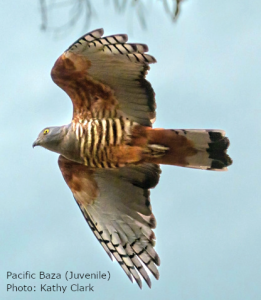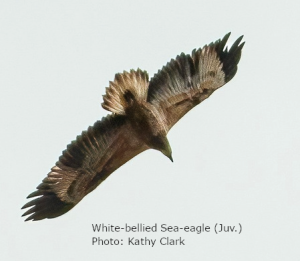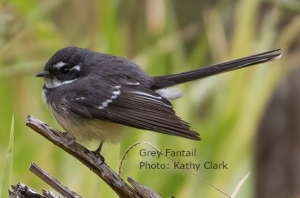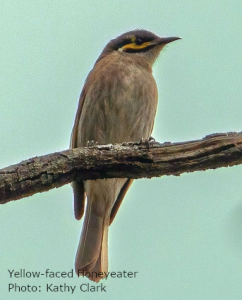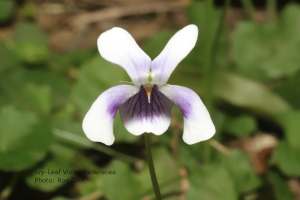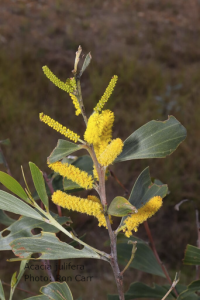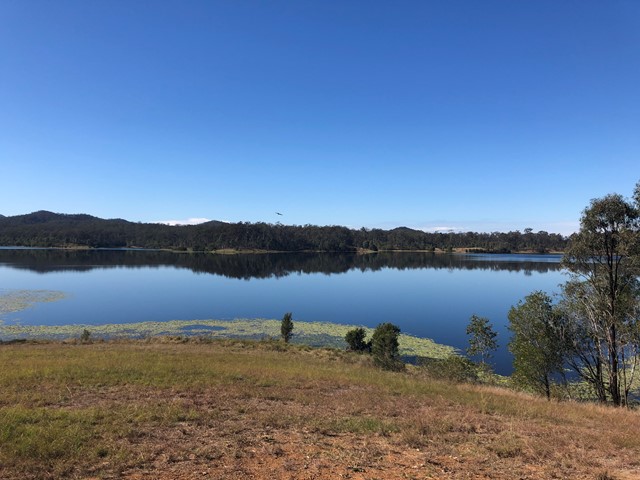
Excursion Report – Day Excursion Lake Manchester, held 1st July ’23
Early on the first cold morning of July, a dedicated group of Nats gathered in the parking area at Lake Manchester. Buoyed by a sighting of little lorikeets amongst the other nectar lovers in the nearby Gum-Topped Boxes the group set off (slowly-how else?!) along the track to the reservoir, surprising a group of brown quail on the way. There was patchy dry rainforest as we crossed the creek with Red Kamala (Mallotus philippensis), Sandpaper Fig (Ficus coronata), magnificent Spotted Gums (Corymbia citriodora var maculata) and Queensland Blue Gum (Eucalyptus tereticornis) on the creek flats. As we crawled up the hill the acacias initiated much discussion as they were hard to pick without flowers at this season.
Positive identifications were made of Acacia julifera, with its early yellow rod flowers, Brisbane Wattle (A. fimbriata) just coming into flower, Sickle Wattle (A. falcata) and Hickory Wattle (A. disparrima). Many of the common eucalyptus forest species were seen as we ascended: Red Ash (Alphitonia excelsa), Forest she-oak (Allocasuarina torulosa), striking stands of Smooth-barked Apple (Angophora leiocarpa) and understorey of Forest Hopbush (Dodonea triquetra), Dogwood (Jacksonia scoparia), Bushman’s Bootlaces (Wikistroemia indica) and creeping Native Sarsparilla(Hardenbergia violacea).
There was some excitement occasioned by sighting of the endangered Lloyd’s Olive (Olealloydii) and of Leichardt’s Ironbark (Bridelai leichardtii), not familiar to many of us. Much thought was put into the identification of Small-leaved Tuckeroo (Cupaniopsis parvifolia) (Research grade now in iNaturalist) with its similarity to Hairy Alectryon (Alectryon tomentosus) growing nearby. Our mistletoe man identified Amyema conspicua which was cleverly disguising itself with an overgrowth of Burny Vine (Trophia scandens). We saw Shiny-leafed Canthium (Psydrax odorata) – formerly Canthium odorata, with its stems swollen by ant colonies. A trek into the bush to check on a thorny specimen produced Mysore Thorn (Biancea decapetala) – formerly Caesalpinia sepiaria with its vicious spines. This is listed as naturalised in Australia. Identified grasses were Kangaroo Grass (Themeda triangularis), Barbed-wire Grass (Cymbogon refractus), Speargrass (Heteropogon contortus), introduced Johnson’s Grass, and Natal Grass (Melinis repens).
There were many honeyeaters, Scarlet, Yellow-faced, White-throated and Lewin with Noisy and Little Friarbirds. There was the incessant piping of the Striated Pardalote and Spotted Pardalote were also observed. Past the dam wall the group walked onto a promontory into the lake where we saw Dusky Moorhen, Red-backed Fairywren, Golden-headed Cisticola, Australasian Grebe and a single Gull-billed Tern circling the water. Cormorants, divers and an intermediate egret were also seen. This moister area yielded Water Chestnut (Eleocharis dulcis), Slender Knotweed (Persicaria decipiens), Feathered Mosquito Fern (Azolla pinnata) and Spreading Liverseed Grass (Urochloa emini).

